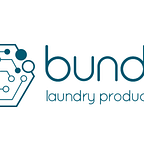How to streamline textile life cycle management with a RFID-based inventory management system
Textile life cycle management is a critical process within the textile industry, encompassing everything from raw material sourcing to manufacturing, distribution, and disposal or recycling. Managing this life cycle efficiently ensures that the industry operates smoothly and sustainably. RFID-based inventory management systems offer a modern and efficient way to manage textiles throughout their life cycle.
Radio frequency identification technology provides real-time data and automates many aspects of inventory management, minimising human error and enhancing supply chain visibility. This article explores how integrating RFID into textile life cycle management can streamline operations, reduce costs, and improve overall efficiency.
Understanding textile life cycle management
Textile life cycle management refers to overseeing every stage of a textile product’s journey, from production to the end of its useful life. This process includes raw material acquisition, manufacturing, transportation, retail, use, and eventually recycling or disposal. Each stage involves significant resource use, environmental impact, and economic considerations, making efficient management essential.
Inventory management is a key component of this life cycle, as textiles must be tracked at various points in their journey. Traditional inventory methods, like barcode scanning or manual data entry often lead to delays, inaccuracies, and increased labour costs. These challenges make it harder for businesses to maintain transparency, meet customer demands, and control costs. This is where RFID-based inventory management systems come into play.
Learning the benefits of implementing a RFID-based inventory management system
Implementing a system utilising radio frequency identification technology offers numerous advantages that help address the limitations of traditional methods. Here are some of the primary benefits:
Increased accuracy
RFID technology drastically reduces human error in inventory tracking by automating the process. Unlike barcodes, which require manual scanning, RFID tags can be read from a distance, eliminating the need for line-of-sight scanning. This leads to more accurate inventory data, which is essential for decision-making and maintaining operational efficiency.
Real-time tracking
RFID provides real-time data access, allowing businesses to track inventory at any stage of the textile life cycle. This level of visibility helps decision-makers respond swiftly to issues such as stock shortages or overstocking, leading to improved supply chain responsiveness. With real-time data, businesses can forecast demand more accurately and optimise inventory levels.
Cost efficiency
By automating inventory tracking and reducing the need for manual labour, RFID systems help lower operational costs. Businesses save money on workforce expenditures and minimise losses caused by stock discrepancies or outdated inventory. Additionally, improved stock management prevents overproduction and reduces waste, contributing to cost savings and environmental sustainability.
Streamlining textile life cycle management with RFID
RFID systems can be integrated into each stage of the textile life cycle, from sourcing raw materials to the sale of the final product. Here’s how it works across different stages:
- Sourcing and manufacturing: RFID tags can be applied to raw materials as they enter production. These tags carry essential data that can be tracked throughout the manufacturing process, providing updates on production status and reducing the risk of errors
- Distribution and retail: In the distribution phase, RFID technology allows companies to track shipments in real time, ensuring they reach their destinations efficiently. Retailers benefit from RFID by having accurate stock levels, helping them meet customer demand without delay
- End of life: As textiles reach the end of their life cycle, RFID can track recycling processes or disposal methods, ensuring that materials are disposed of in an environmentally responsible manner
Numerous companies in the textile industry have successfully implemented RFID systems, leading to reduced stock discrepancies, enhanced visibility, and increased profitability. RFID also helps companies respond more swiftly to supply chain disruptions, ensuring continued production and customer satisfaction.
Implementing a RFID-based inventory management system
Successfully implementing a RFID system requires a systematic approach. Here are the key steps:
1. Assessing current inventory management practices
Before implementing RFID, businesses should evaluate their existing inventory systems to identify inefficiencies and areas for improvement. Understanding the current workflow is crucial for seamless integration.
2. Choosing the right RFID technology and partners
There are various types of RFID systems, including passive and active tags, each suited to different applications. Businesses should choose the technology that best fits their needs and select a reliable partner to help with installation and support.
3. Training staff and integrating the system into existing processes
Employees need to be trained on how to use the RFID system effectively. Additionally, businesses must ensure that the new system integrates smoothly with existing software and operational workflows to avoid disruptions.
Overcoming challenges in implementation
Adopting a radio frequency identification technology-based inventory management system is not without challenges. Some common obstacles include:
- Resistance to change: Employees may be hesitant to adopt new technology due to unfamiliarity or fear of job displacement. To address this, businesses should provide adequate training and communicate the benefits of RFID for both the company and its workforce
- Integration with existing systems: Many businesses rely on legacy inventory management systems that may not be easily compatible with RFID technology. Choosing a RFID solution that offers integration support is essential
- Ongoing maintenance: Like any technology, RFID systems require regular updates and maintenance to function effectively. Establishing a maintenance plan ensures the system continues to deliver accurate data
Integrating a RFID-based inventory management system into textile life cycle management offers significant benefits, including improved accuracy, real-time tracking, and cost savings. This technology helps businesses streamline operations, enhance supply chain visibility, and reduce waste. With RFID, textile manufacturers can respond quickly to market changes, improve customer satisfaction, and achieve greater efficiency.
As technology continues to evolve, RFID will play an increasingly important role in the textile industry. For businesses looking to stay competitive and sustainable, adopting an efficient inventory management system is a critical step toward future success.
Now is the time to explore how RFID can transform your inventory management practices. By making this investment, you’ll not only streamline operations but also contribute to a more efficient, eco-friendly industry.
